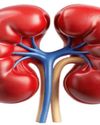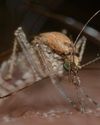Use of Algae for Wastewater Treatment Containing Heavy Metals
Scientific India
|September - October 2024
Wastewater treatment is a critical environmental issue particularly when it comes to the removal of heavy metals.
-

These contaminants often originating from industrial processes, mining activities and agricultural runoff pose significant risks to both ecosystems and human health. Conventional methods for removing heavy metals from wastewater can be costly and sometimes ineffective. In recent years there has been growing interest in the use of algae as a sustainable and efficient solution for wastewater treatment. This article explores the potential of algae in treating wastewater containing heavy metals examining their mechanisms benefits and challenges.
Mechanisms of Algal Treatment
Algae primarily microalgae and macroalgae have shown great potential in absorbing and accumulating heavy metals from wastewater. The mechanisms by which algae achieve this can be broadly categorized into biosorption and bioaccumulation.
Biosorption: Biosorption involves the passive binding of heavy metals to the surface of algal cells. This process is largely driven by the cell wall components such as polysaccharides, proteins and lipids which contain functional groups capable of binding metal ions. The efficiency of biosorption depends on various factors including the type of algae the nature of the heavy metals, pH, temperature and contact time. Algae such as Chlorella vulgaris and Spirulina platensis have demonstrated high biosorption capacities for metals like cadmium, lead and chromium.
Bioaccumulation: Bioaccumulation refers to the active absorption and internalization of toxic substances by algae cells. This process involves the transport of metal ions across the cell membrane and their subsequent sequestration in intracellular compartments.
Diese Geschichte stammt aus der September - October 2024-Ausgabe von Scientific India.
Abonnieren Sie Magzter GOLD, um auf Tausende kuratierter Premium-Geschichten und über 9.000 Zeitschriften und Zeitungen zuzugreifen.
Sie sind bereits Abonnent? Anmelden
WEITERE GESCHICHTEN VON Scientific India
Scientific India
Japanese physicists were the first to measure the most tolerant entanglement state, the W state
There are many unusual things that happen in the world of quantum physics.
3 mins
September - October 2025

Scientific India
The Fifth Force: Could It Unlock the Secret of Dark Matter?
What if the universe is powered by a force we've never seen before? For centuries, science has explained nature with four fundamental forces.
3 mins
September - October 2025

Scientific India
A flu test you can chew
As flu season nears in the northern hemisphere, scientists are exploring a surprising new way to detect infection: through taste.
1 mins
September - October 2025

Scientific India
Lab-Grown Kidney Brings Artificial Organ Dream Closer to Reality
In a major leap toward bioengineered organ replacement, scientists have successfully grown human kidney 'assembloids' in the laboratory that mimic key structural and functional features of natural kidneys.
1 min
September - October 2025

Scientific India
Your pumpkin might be hiding a toxic secret
Pumpkins, squash, zucchini, and other members of the gourd family have a surprising trait: they can take up pollutants from the soil and store them in their edible parts.
1 mins
September - October 2025

Scientific India
2025 Nobel Prize in Physics Reveals Quantum Secrets in Superconducting Circuits
The 2025 Nobel Prize in Physics has been awarded to John Clarke, Michel H. Devoret, and John M. Martinis for their pioneering experiments that brought quantum mechanics from the invisible atomic world to the macroscopic scale a system large enough to hold in your hand.
1 mins
September - October 2025

Scientific India
Genomic Evidence Redefines the Evolutionary Age of Mosquitoes
A new genetic analysis has shaken up what we thought we knew about one of humanity's most notorious pests the mosquito.
1 min
September - October 2025

Scientific India
Nobel Prize in Chemistry 2025: Building Molecular Architectures with Room to Breathe
In a scientific breakthrough that bridges molecular design with planetary-scale problems, the 2025 Nobel Prize in Chemistry has been awarded to Susumu Kitagawa, Richard Robson, and Omar Yaghi.
1 mins
September - October 2025

Scientific India
Guardians of Immunity: Nobel Prize 2025 Honors Discoveries that Keep the Immune System in Check
The 2025 Nobel Prize in Physiology or Medicine has been awarded to Mary E. Brunkow, Fred Ramsdell, and Shimon Sakaguchi for their groundbreaking discoveries in the field of peripheral immune tolerance a crucial mechanism that prevents the body's immune system from turning against itself.
1 mins
September - October 2025

Scientific India
'Is cold nuclear fusion feasible?
In early May 1989, two chemists from the University of Utah, Pons and Fleischmann, arrived in Washington, U.S.A. The aim is to present their findings to members of the US Congress.
3 mins
September - October 2025
Listen
Translate
Change font size

